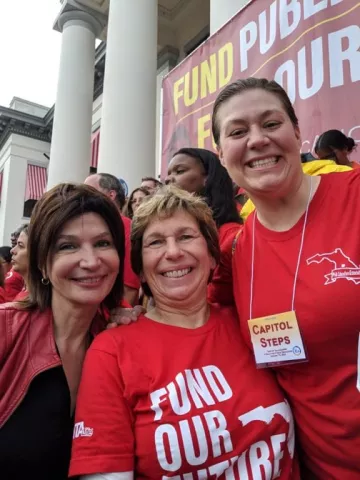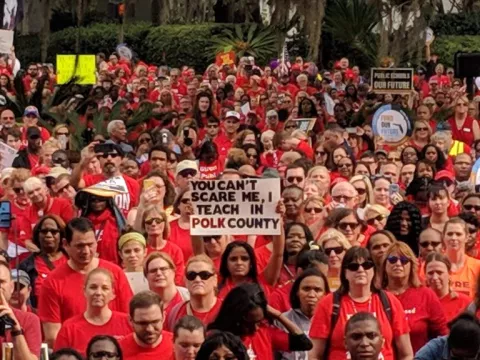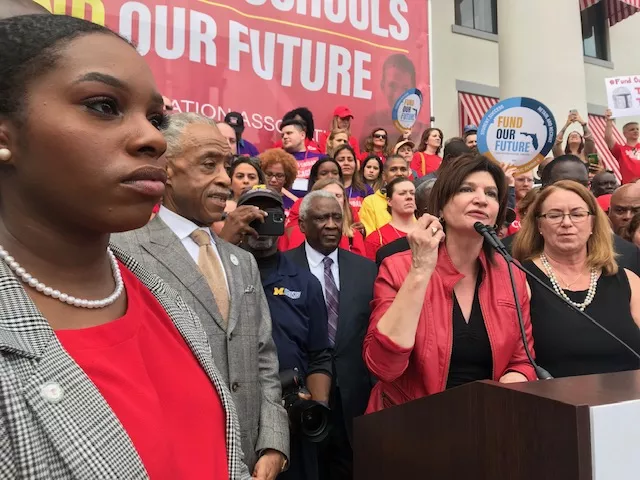Across Florida, more than 20,000 educators, parents, students, and allies rallied at the state capitol in Tallahassee on Tuesday to protest years of decline in school funding. Educators were threatened by the state Department of Education and district superintendents with expulsion, union de-certification, and loss of license for participating, but turned out nonetheless to support their students.
The educators are protesting inadequate funding of Florida’s public education system, and the serious teacher shortage that has left more than 3,500 teaching vacancies across the state.
“We have seen more than a decade of disinvestment in public education in this state, and that has to stop,” said Fedrick Ingram, president of the Florida Education Association.

Anita Carson, an FEA member and educator in the Polk County School District, carried a sign that read, “FLDOE tried to scare us! Polk County threatened to fire us! Nevertheless we persisted.” Nearly one-quarter of educators from her school district took personal days to attend the rally, despite threats to their jobs. Carson said she had to attend the rally to advocate for her students in high-poverty neighborhoods. She said, “I didn’t plan to leave teaching. I didn’t plan to leave the Polk County School District and after today I might not get to be a teacher anymore, but I’m still here.”
Carson continued, “Every student deserves a school that is amazing. If we aren’t doing everything we can to fund our schools, then we are doing wrong by them.” Her goal was to share with legislators a vision for public schools that goes beyond simply filling vacancies to recruit and retain highly qualified educators with restore full school funding that meets students’ needs.
“Not only do we need to fill the current positions, but also we need to the student load of our counselors, reduce the student load of our nurses,” said Carson.

Lily Eskelsen García, president of the National Education Association and a former elementary school educator, also spoke at the rally about the influence of billionaires like Education Secretary Betsy DeVos on statewide legislatures.
“Their influence in state capitols around the country is out of control and it’s hurting our communities and hurting our kids. Florida schools have been starved. Florida schools are in a funding crisis – and it’s not the educators who created this crisis. It’s not our student or their families who created this crisis. It’s the politicians who had other priorities – who listened to the wrong people – and they forgot what job one is: to fund our future,” said Eskelsen García.
She went on to say that if “students don’t get what they need at school, they don’t get what we need;” a message reiterated by Carson, who has worked with students experiencing homelessness, whose only opportunity to eat during the day is at school.
The Florida state legislature returns to session before the end of the month, with education standing front and center as a top priority.

